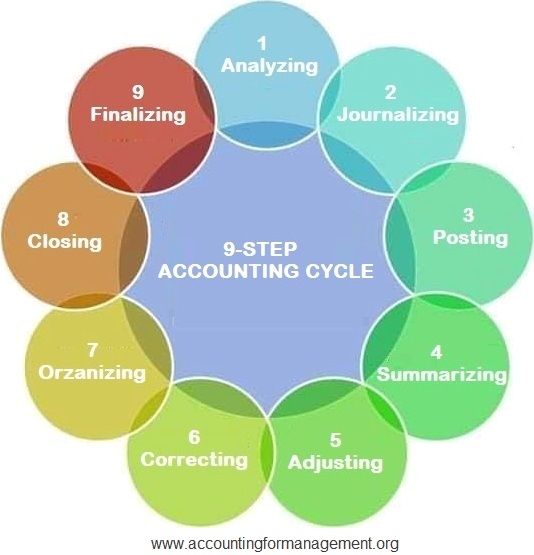
Business transactions identified are then analyzed to determine the accounts affected and the amounts to be recorded. The purpose of this step is to ensure that the total credit balance and total debit balance are equal. This stage can catch a lot of mistakes if those numbers do not match up.
General Journal
These statements are helpful and show the company’s current financial position and performance. After the company makes all adjusting entries, it then generates its financial statements in the seventh step. For most companies, these statements will include an income statement, balance sheet, and cash flow statement. Cash accounting requires transactions to be recorded when cash is either received or paid. Double-entry bookkeeping calls for recording two entries with each transaction in order to manage a thoroughly developed balance sheet along with an income statement and cash flow statement. After you complete your financial statements, you can close the books.

The Accounting Cycle: 8 Steps You Need To Know
The accounting cycle is used comprehensively through one full reporting period. Thus, staying organized throughout the process’s time frame can be a key element that helps to maintain overall efficiency. Most companies seek to analyze their performance on a monthly basis, though some may focus more heavily on quarterly or annual results. This new trial balance is called an adjusted trial balance, and one of its purposes is to prove that all of your ledger’s credits and debits balance after all adjustments. Missing transaction adjustments help you account for the financial transactions you forgot about while bookkeeping—things like business purchases on your personal credit.
- Understanding the accounting cycle is crucial for proper financial oversight.
- After determining the accounts involved, the next step is to journalize the transaction in a journal book.
- Without accounting, the financial position of a business cannot be analyzed.
Company
It involves eight steps that ensure the proper recording and reporting of financial transactions. Once a company’s books are closed and the accounting cycle for a period ends, it begins anew with the next accounting period and financial transactions. According to the rules of double-entry accounting, all of a company’s credits must equal the total debits. If the sum of the debit balances in a trial balance doesn’t equal the sum of the credit balances, that means there’s been an error in either the recording or posting of journal entries. Bookkeepers analyze the transaction and record it in the general journal with a journal entry.
Create a free account to unlock this Template
Next, the professionals read the collected data, check each transaction that occurred, and note the reasons that led to those transactions. Finally, they put it under the right label and determine their impact on different accounts based on their analysis. The identification of transactions is, arguably, the most important step in the process. This can impact a business’s financial statements and financial position. If financial activity goes unidentified, it cannot be reviewed or monitored by the business. When you make a sale, the accounting software automatically adds the transaction to the revenue account and updates the income statement.
Post the transactions.
Beyond sales, there are also expenses that can come in many varieties. Closing entries offset all of the balances in your revenue and expense accounts. You offset the balances using something called “retained earnings.” Essentially, this is the profit or loss for the year that is “retained” in your business. Accruals make sure that the financial statements you’re preparing now take those future payments and expenses into account. Simply put, the credit is where your money is coming from, and the debit is what it’s going towards.
Keep in mind that accrual accounting requires the matching of revenues with expenses so both must be booked at the time of sale. One of the main duties of a bookkeeper is to keep track of the full accounting cycle from start to finish. The cycle repeats itself every fiscal year as long as a company remains in business. approve and authorize an expense claim in xero Now that your adjusting entries are posted, create an adjusted trial balance and complete your financial statements. The adjusted trial balance should list all ending balances for your general ledger accounts. The third step of the accounting process is to post those journal entries into ledger accounts.
However, understanding how the process works is critical so you can intervene when needed. For example, in the previous transaction, Supreme Cleaners had the invoice for $200. He needs to do this process for every transaction occurring during the period. Now, let’s have a closer look on the complete accounting cycle process by performing the following example step by step.
Each entry should list details about every transaction in chronological order. If your company uses double-entry accounting, the details include a debit and credit for each transaction. This method makes it easier to track how events affect your finances.
